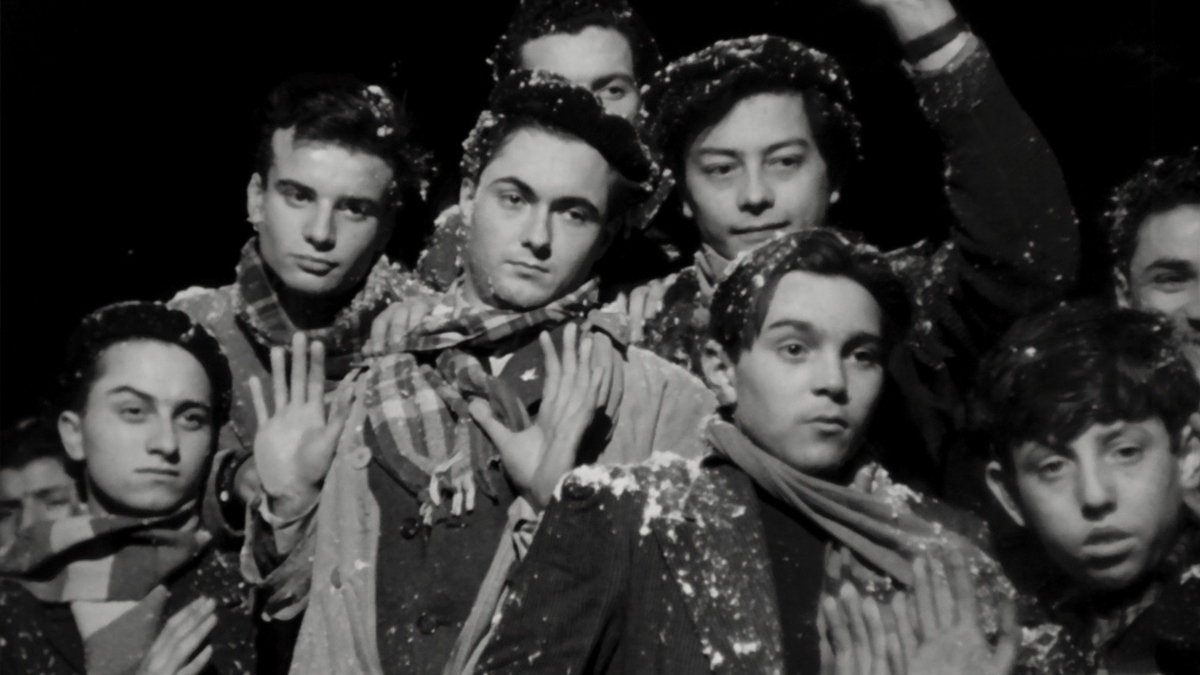
©1950 Carole Weisweiller (all rights reserved) Restauration in 4K in 2020 . ReallyLikeFilms
"Les Enfants Terribles" by Melville Cocteau Ore snowballs continue to emit a dull light
2021.10.03
"Les Enfants Terribles" synopsis
One snowy evening, during a snowball fight among junior high school students, Paul falls to the ground after being hit by a snowball thrown by his classmate Darjuros, who he secretly had feelings for. Paul is injured and ends up recuperating at home, but it is a secret children's room with his older sister Elisabeth, a world of play and love that is fraught with death and does not allow interference from others.
Index
gaze of domination
“If directing is the gaze, then editing is the heartbeat.” (Jean-Luc Godard) *1
``Les Enfants Terribles'' (50) begins with the sound of a hand drum being beaten. The repeated beats of the drums, as if to signal the opening of the show that is about to begin, lead us to the scene of a snowball fight in the famous plaza. This opening scene, which opens with a ridiculous scene, is similar to the ridiculous scene at the beginning of Jean Cocteau's `` Orphée '' (1950), which was filmed until just before the start of the film, and above all, it is a scene that was also directed by Jean Cocteau. This matches the snowball fight scene in the short story `` Poet's Blood '' (32).
Melville-Cocteau's work, including the eternal freshness emanating from the children's ramblings, was a revelation to the later Nouvelle Vague. Jean Cocteau's image continues to be inherited in today's films, right down to Leos Carax, who referenced the ``keyhole'' from ``Blood of the Poet'' at the beginning of ``Holy Motors '' (12).
"Les Enfants Terribles" preview
What makes ``Les Enfants Terribles'' a unique work is that the image of Jean Cocteau, the original author, and the image of Jean-Pierre Melville, the director, conflict with each other, making it miraculously a hybrid work of both. It is being created. The duo of Jean-Pierre Melville, who had already worked on a work that could be described as a rigid poem in his first full-length film, `` The Silence of the Sea '' (1949), and cinematographer Henri Decaet, thoroughly focused on Jean Cocteau's dream demons. Maintains objectivity.
This can already be seen in the beautiful panning shots that take advantage of the height difference between Dargerus (Renée Kojima) standing high up and the children on the ground in the snowball fight scene. A bird's-eye view ruled by Darjuros, a cruel god with dirty hands. Even before Dargiros hits Paul (Edouard Delmitt) in the chest with a stone-filled snowball, Dargiros' control over Paul has already begun in this short shot.
Paul is knocked down by a snowball that hits him in the chest, and is carried to the hospital while being hugged by his friend Gerard (Jacques Bernard). From the window of the car the two of them were riding in, the outside scenery was clouded with snow and frost and could not be seen. Paul is about to lose consciousness and is in a closed space. Meanwhile, Darjuros is called to the principal's office and is expelled for harming the principal. Darjuros disappears from Paul's sight in the blink of an eye, as if he were the momentary emotion emitted by the commotion. A rule by absence that could be called worship begins.
And now that Paul has lost Dargerus, he is faced with the double domination of his older sister Elisabeth (Nicole Stéphane). Elisabeth and Paul face each other as if it's a secret ritual that only siblings know about. Their faces do not face each other, and their gazes pierce the empty space in front of them into the distance.

